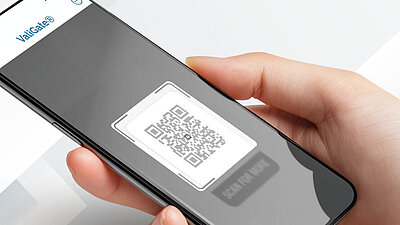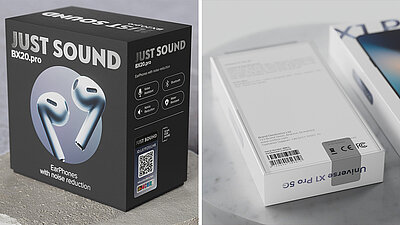Getting started with product digitalization: 3 tips to make your organization move

Your organization is capable of so much more…
All companies claim to give top priority to digitalization and to be doing everything in their power to drive this forward. However, despite this strategic message, very often nothing happens. Are you keen to digitally connect your company's products, convinced that this can make your company more successful? Yet you fail to make any progress and find yourself being held back by internal factors? You are not alone. Many businesses are unsure and hesitate instead of taking action – meaning they lose valuable time. We have put together three tips for you below on how you can get your organization to press ahead with digitalizing its products.
Tip 1: Gain interdepartmental advantages
Digitalizing your products will benefit many different areas of the company. Here are just a few examples:
Marketing: The transparent customer
Digitally integrated products, also known as connected products, allow you to interact with your customers. You can use customized marketing campaigns, competitions, rewards schemes and surveys to boost sales and increase brand loyalty – and find out what it is your customers really want and what makes them tick.
Product management: The product of the future
You will learn first-hand from your customers what really matters to them. This provides vital inspiration for improving existing products and developing new ones. By focusing on your customers, you will be able to create the perfect product for the future and keep your competitors at bay.
Brand management: Brand protection and counterfeit protection
Product markings or specialist product labels provide the basis for digitally connected products. Opting for counterfeit-proof markings in the form of digital touchpoints can also protect your brand(s) from fraud. Counterfeit protection labels of this kind provide each product with its own identity, similar to a passport, thereby identifying it as an original product. Suspicious products and potential counterfeits are recorded on a digital platform such as the tesa® 360 platform. As the brand owner, you can then effectively dispatch investigators and apprehend counterfeiters. This prevents inferior-quality counterfeits from being mistaken for your branded products.
Supply chain: The transparent supply chain
Production and logistics processes are becoming more and more complex due to the increasingly global nature of trade, for instance. Customers, be they private consumers or business clients, are demanding ever shorter delivery times accompanied by consistent quality or falling prices. This is an immense challenge for the supply chain, which can only be achieved by maximizing efficiency. Underpinning this is the need for transparency and control across all processes. It is completely unnecessary to implement a time-consuming and costly Track & Trace system for this. If products are connected to the digital world by means of markings or labels, it is also possible to obtain the necessary information in this way – faster and with a reduced budget, too.
Tip 2: Show how a rapid return on investment can be achieved
Many companies are also hesitant to digitalize their products because they expect to have to invest a tremendous amount, both in terms of budget and the resources required. Yes, investment is necessary. However, if the project is well thought out, a rapid return on investment (ROI) will be achieved. As mentioned earlier, there are many different areas of an organization that will benefit from digitally connecting its products – all based on a single system. The costs of the project can easily be distributed across multiple departments. Ideally, ongoing activities will even be replaced by the new digitalization measures. As a result, this is not necessarily an extra investment, but rather a more efficient and strategically valuable use of your budget.
A modular project flow creates security
What is more, digitalization is not an all-or-nothing approach. On the contrary, digitalization solutions can be implemented in a modular fashion and then scaled up or down as required. We assist our customers in developing a concrete business case. This provides a reliable basis for decision-making and reduces any risk.
Tip 3: Make it clear that businesses can only continue to be successful if they take advantage of digitalization
An important (perhaps even the most important) argument to end on: Only those companies that make the most of digitalization will be successful in the future. And that means both for their customers and for internal processes. Because these are the companies who will be able to offer better customer service, introduce better products to the market, deliver them faster, save on process costs, and so on. The list is long.
The wave of digitalization has only just begun. This means that your organization has the chance to become a digital leader and leave its competitors in its wake. But this is a small window of opportunity and your competitors are already on the starting grid. The earlier you start, the better.
We hope our tips will help you give your business the impetus it needs. We know it's not as easy as it seems. Which is why we are here to help with over 15 years of experience in digital product integration. Our consulting team, led by Dr Fabian Dörfel, can provide assistance with creating a business case, for example.




